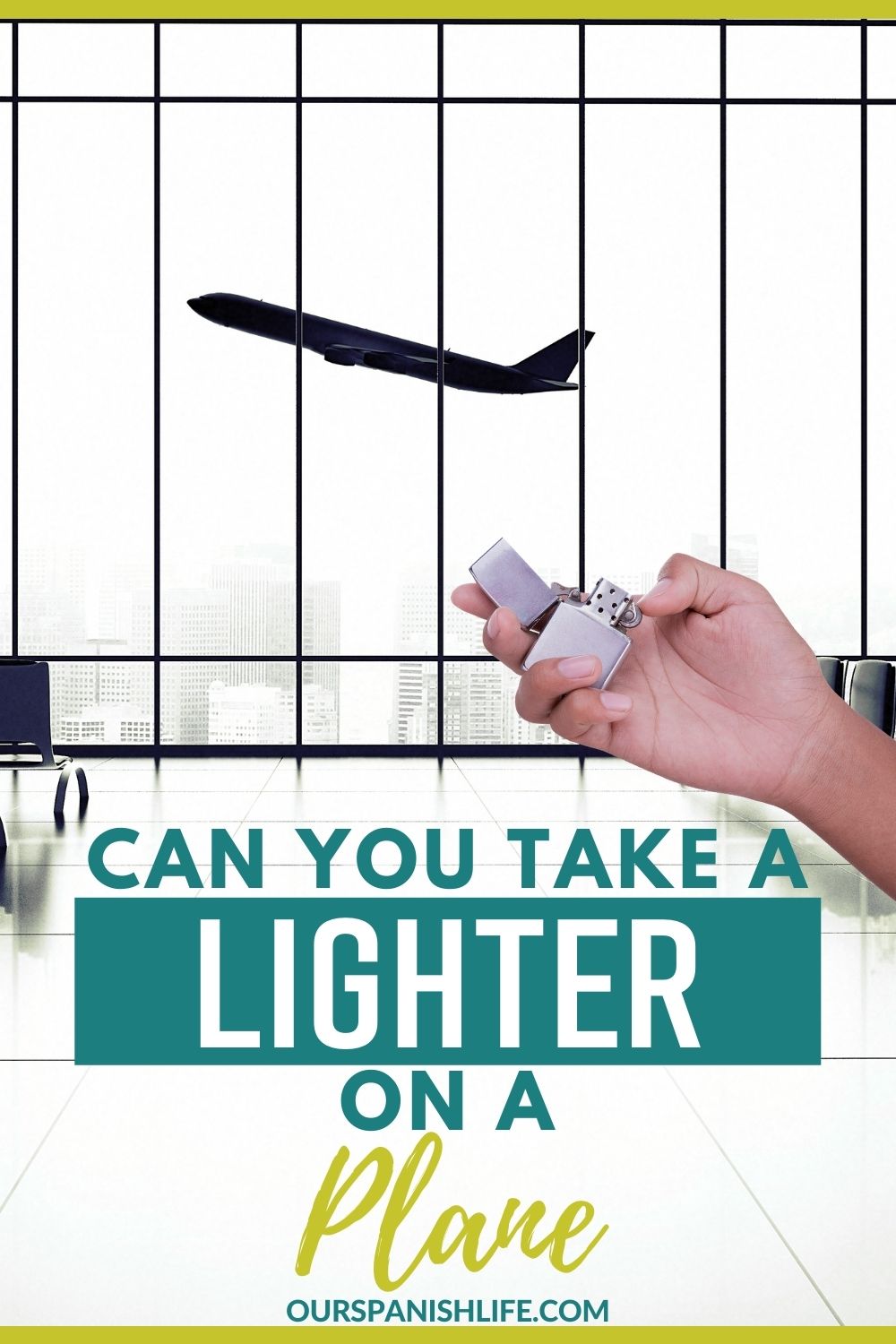There once was a time you could walk someone to their gate and wave as the plane pulled out towards the runway.
It was a more carefree time when people just threw whatever into their suitcases without fear of any issue.
That time also included leaving your shoes on so there would be more grip on the smooth floor as you ran to board on time.
The rules of flying have gotten much more meticulous over the last two decades.
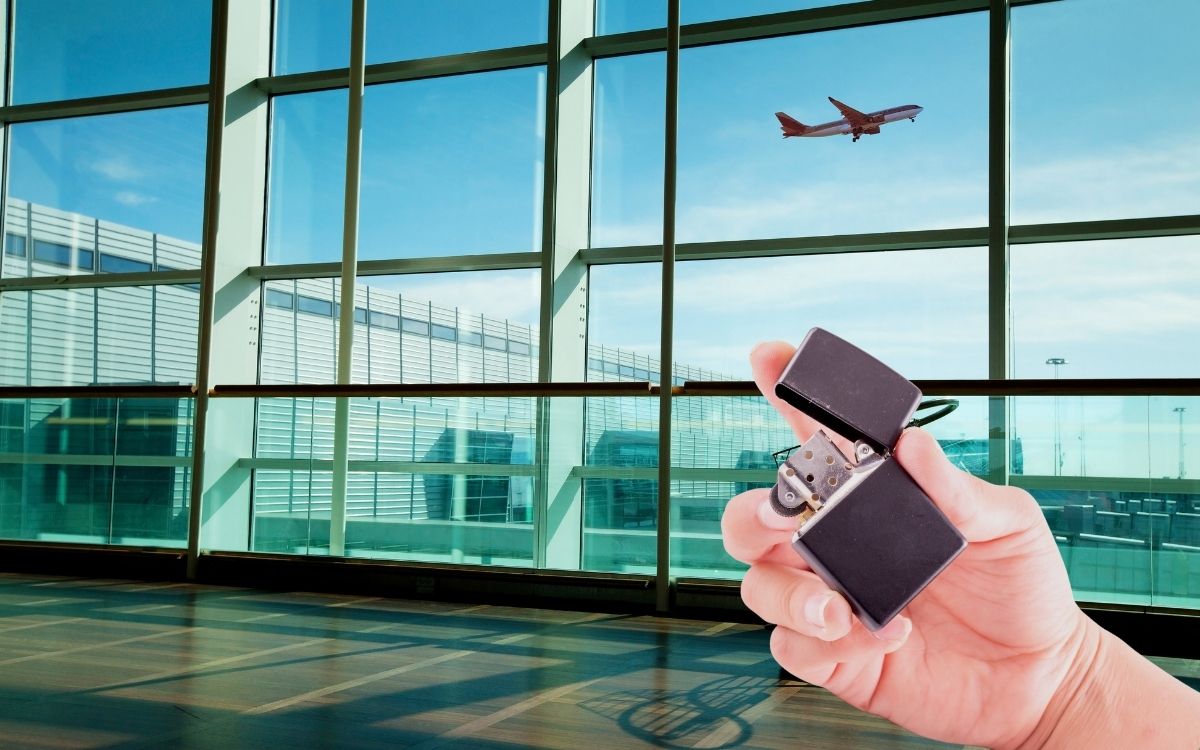
Contents
From having to throw out entire bottles of contact solution to running for your gate with one hand on your pants and the other holding your shoes, a lot has changed.
The TSA rules seem to be shifting often enough to where you might be unprepared when you, in fact, believe you came prepared. Like when you are bringing back souvenirs.
What does the TSA say about cigarette lighters?
Who doesn’t love a hot bath by candlelight on vacation? For that reason, among others, it’s of the utmost importance to be fully versed on what is and isn’t allowed on your getaway.
So, what will happen if you show up at the airport and bring cigar lighters on a plane? It depends on the lighter, mostly, and where you put it.
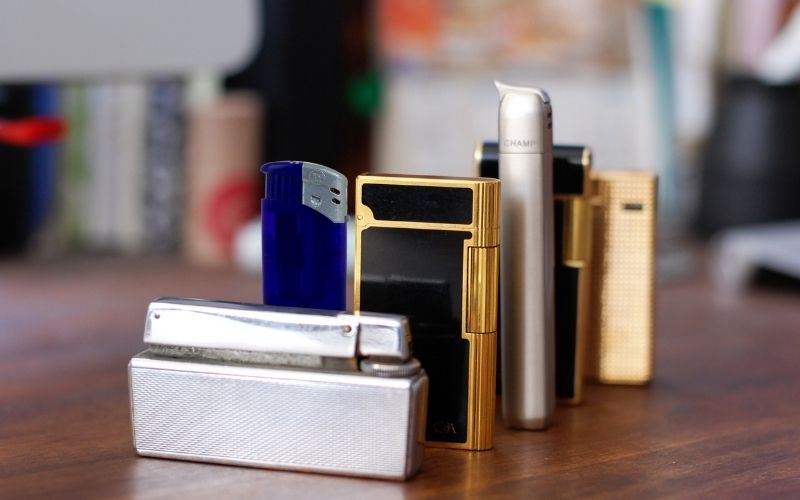
- Disposable and Zippo lighters are allowed in your carry-on luggage.
- Zippo and disposable lighters are allowed in your checked bag on one condition, they are empty of lighter fuel.
- The only exception to that rule is if the lighter in question follows the standard made by the Department of Transportation. That means you can bring two lighters that contain lighter fluid but only when they are in a specifically designated DOT-approved case. No additional lighters are permitted.
Are there any lighters the TSA prohibits?
With technology, the ways in which a cigarette lighter has evolved are interesting and, at times, confusing. The TSA cigarette lighter rules have a particular disdain for plasma lighters and arc lighters.
The government organization is also opposed to anything that pretends to be a lighter, such as electronic lighters. That goes for your carry-on or otherwise.
If you try to be slick and stuff one of these types of lighters in your bag, prepare for delays.
Remember, your bags are scanned and they will see a lighter no matter how many socks you wrap it in.
No one wants to get pulled out of line over something trivial in the long run.
What if there’s a lighter in the bag?
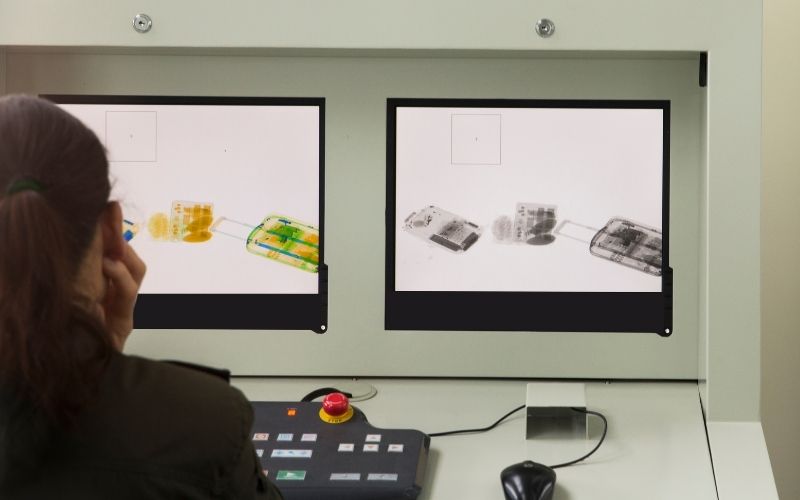
The reality is, if they pull you out of line for additional screening and search through your things, they will find the lighter. At that point, if they deem it unable to go with you, it will go in the trash.
If you don’t want to throw it away, you’ll have to go through a security check all over again to step out of line. At that point, you’ll have to go find a place in the airport to mail it to someone or yourself.
Then, get back to the line all before the allotted time to check-in.
Do yourself a favor and avoid the hassle. Only bring what’s permitted and you won’t give yourself and everyone around you a headache.
You can get lighter refills when you arrive at your destination.
What does the TSA have to say about matches?
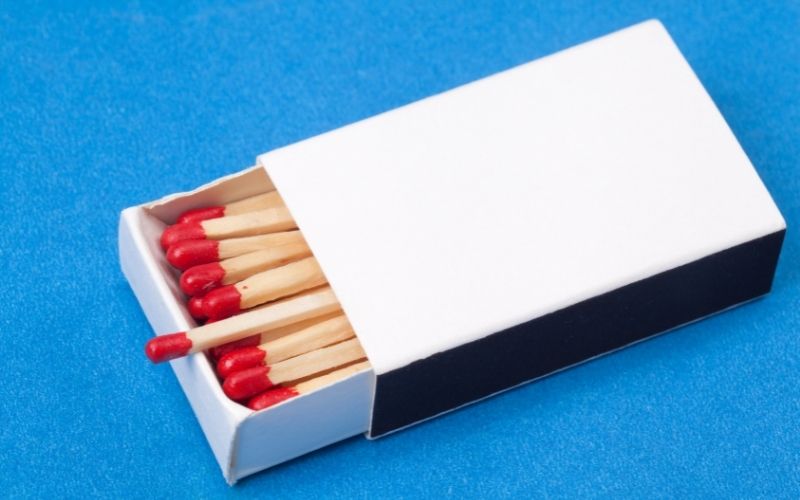
At this point, you may be thinking, “This is complicated. I’m just going to take matches instead.” That is logical, but it’s not quite as simple as that.
Just like with lighters, there are restrictions for matches.
First, let’s get the elephant in the room out of the way.
The most common type of matches that you get at hotel rooms, casinos, and at any event giving away cheap promotional items are strike matches.
You know, the kind where you drag it quickly across the strip on the back of the packet to get a flame.
Those are not allowed.
If you want to bring matches with you, they must be safety matches and only one packet.
Strike Matches vs Safety Matches
Before we go over the differences, it’s probably helpful to understand what makes a match produce a flame, aside from friction.
The key ingredients in both types of matches are phosphorus and sulfur.
- Strike Matches. This type of match comes with a tip that includes both ingredients. That means if you strike it across any surface quickly enough, it is most likely to produce a flame.
The box or pack comes with a strip to use, but you can really light a strike match off anywhere.
- Safety Matches. On the top of this match is just the sulfur. So, in order to light it, the match has to come in contact with the phosphorus strip on the box.
While that might sound inconvenient, these are great to also have for emergencies since they are water and stormproof.
Similar to the lighters, no type of matches can be in your checked luggage. If you want to bring safety matches with you, they must be in your carry-on bag.
If you are about to board the plane and the flight attendant offers to give your carry-on a complimentary checked baggage service, you must remove the matches from the carry-on bag and put them in a pocket.
Why can’t lighters or matches be checked on a plane?
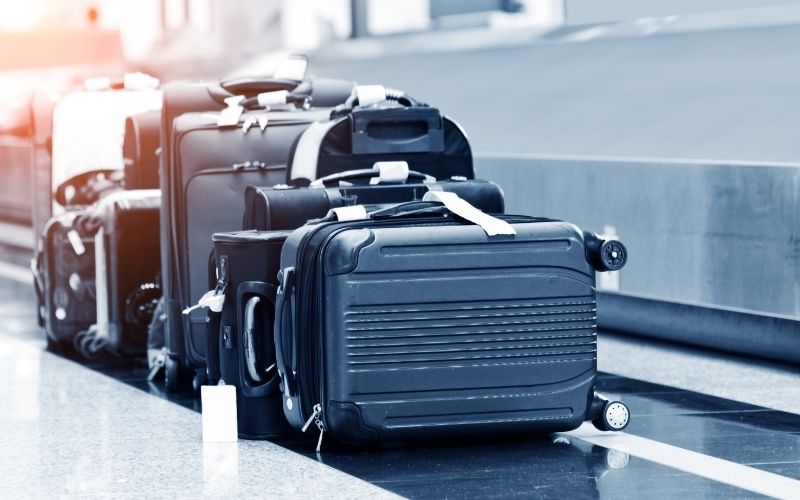
In both circumstances, it’s all about safety. These items are fire hazards. A lighter with flammable liquid in it that is packed with flammable items could catch fire or worse.
If that lighter fluid is near an electronic device with lithium-ion batteries, it could explode. Luckily, that type of explosion isn’t going to cause fatal harm to an entire airplane, but it clearly isn’t helpful.
Matches can sort of spontaneously ignite. Remember, strike matches need only be dragged across a surface quickly to light up because they have both ingredients needed to make a flame.
With the amount of movement going on during a flight, there is no telling how easy it might be to strike a match.
If it happened inside of luggage, the fire could get out of control rather quickly.
Are vapes allowed on flights?
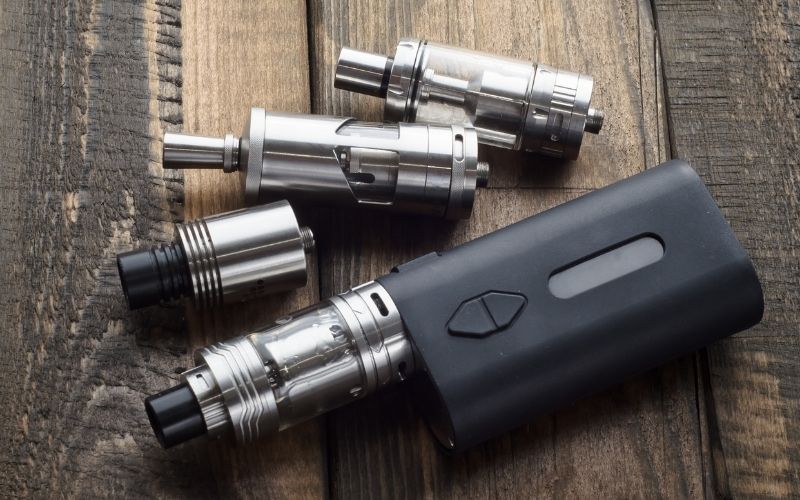
Many tout the benefits of vaping over smoking, so it would seem reasonable that it was acceptable on a plane.
However, that assumption would not be entirely accurate. There are no airlines that have given the okay to passengers bringing any type of vape in their checked luggage.
The reason is that the devices typically have a lithium-ion battery, which we’ve already learned could cause a problem.
When it comes to electronic cigarettes or vaping devices, they can come in your carry-on bags under certain conditions. Mainly, you must keep it from heating up.
Here are the options to achieve that:
- Remove the battery
- Keep the battery and heating coil in different places
- Put the device into an FAA-approved case
- Disable heating coils
In addition to controlling the heat, you’re required to have extra lithium-ion batteries in the carry-on baggage. The ends of the battery have to be protected in a way that will keep them from short-circuiting.
Batteries can not be greater than 100 Wh. You are also restricted from charging any of these types of devices while aboard.
A Possibly Tedious Process
Perhaps, after all of that, you might decide it’s not worth it. There’s a lot of work when it comes to bringing on specialty items like e-cigarettes and vapes.
Be sure to do your research – we have an in-depth guide to bringing vapes on a plane you can check out here.
Don’t forget you’re traveling to get away, not to bring added stress to yourself and those traveling with you.
Other Restricted Flammable Products
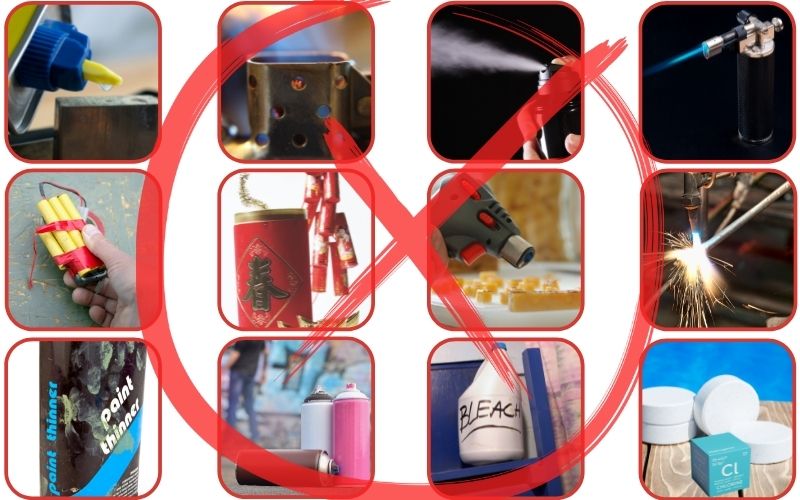
It’s hard to imagine that there were once smoking sections in restaurants throughout the US, but it is almost impossible to accept there was smoking on flights.
From the dawn of commercial flights until 1990, it was an acceptable practice. Even then, flights over six hours left the option open.
A lot has changed over the years and airlines have cracked down.
It should go without saying that while you are allowed to bring tobacco products aboard your flight, you are not permitted to smoke them.
Other items you won’t be able to take onto a plane:
- Butane lighter
- Butane torch lighters
- Blue flame lighters
- Explosives
- Aerosols (including hair spray in some cases)
- Gas torches
- Utility torches
- Micro torches
- Chef torches
- Fireworks
- Paint thinner
- Spray paint
- Bleach
- Chlorine
TSA’s 3-1-1 Rule
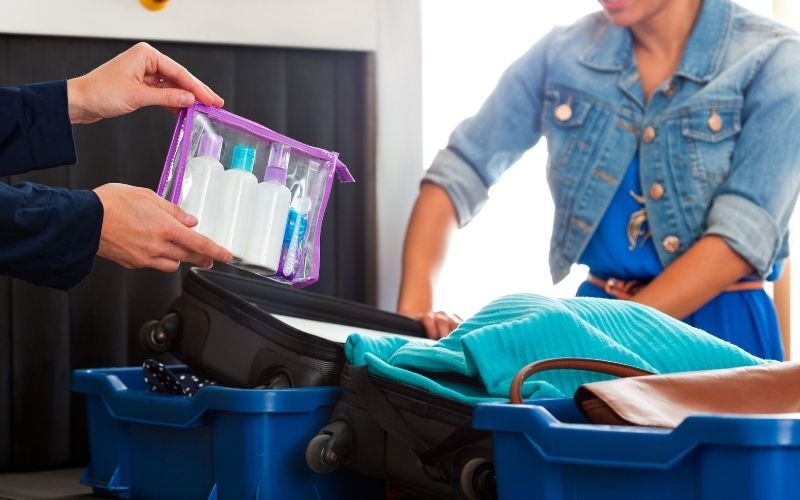
There are some items that you can bring but in very limited quantities. These products and materials are more of a gray area when it comes to acceptability.
TSA has a 3-1-1 rule for particular items that are iffy.
For example, aerosols and hair gel are generally considered a no-no, but in a 3.4oz container, they can come aboard.
How does the rest of the rule break down?
- 3 – 3.4 ounce container
- 1 – just enough of these 3.4oz containers to fit in one quart-sized bag
- 1 – only one quart-sized bag per passenger
The types of things that are included under this umbrella are liquids, aerosols, gels, pastes, and even creams.
When it comes to taking them into the cabin with you, pull the quart-sized bag out of your carry-on bag.
When you place the luggage onto the conveyer belt, you’ll have to place the bag in a separate tray. That’s where it will be scanned and an alarm will go off if the scanner doesn’t like it.
If you decide it’s not worth the hassle to placing the quart-sized bag into your checked luggage, no extra steps need to be taken.
In fact, some of those things like toothpaste and face cream are good to go in larger packages.
If you have questions, be sure to consult the TSA guidelines before packing.
Related:
- Can You Bring Magnets on a Plane? [Answered]
- 32 Essentials for Your Spain Packing List
- Can You Bring a Razor on a Plane? [Answered]
